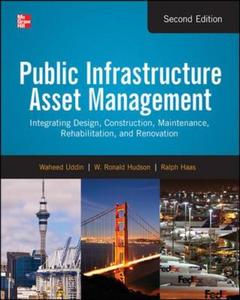Description
Public Infrastructure Asset Management (2nd Ed.)
Author: UDDIN Waheed
Language: English
Subjects for Public Infrastructure Asset Management:
Approximative price 89.08 €
In Print (Delivery period: 10 days).
Add to cart
Publication date: 08-2013
464 p. · Hardback
464 p. · Hardback
Description
/li>
Thoroughly updated throughout, Public Infrastructure Asset Management,
Second Edition presents the framework and elements of life cycle
management of civil infrastructure assets in the context of current
practice. The book explains how to achieve the optimal integrated,
multi-disciplinary set of strategies (design, construction, maintenance,
rehabilitation, and renovation) necessary to manage and sustain modern
public physical infrastructure assets. These include: roads and bridges /
airports / ports / public utilities / water and wastewater facilities /
mass transit systems / hospitals / schools / parks and recreation
facilities / sports complexes. The book has been thoroughly revised to
reflect the impact of built infrastructure on the environment, social
concerns, new technologies and scientific developments, and the impacts of
natural and man-made disasters. Covers valuation of infrastructure assets,
largely in response to Government Accounting Standards Requirements such
as GASB34 in the United States, PSAB3150 in Canada, and similar standards
in Australia. Addresses the adverse environmental impacts of deteriorating
air quality, GHG emissions, excessive noise, and available mitigation
strategies. Includes specific approaches to sustainability including green
methodologies, resource conservation, re-use of materials, renewable
energy. Financing models for publicly owned infrastructure and for
public-private-partnerships (P3s). Addresses online infrastructure (data
access, mobile apps, cloud computing) and how these infrastructure
services are assessed and provided. Adds new and/or updated methodologies
on performance measures related to sustainability, security, level of
service provisions, safety, institutional effectiveness, preservation of
assets and investments, technologies for in-service monitoring, data
analysis, prioritization, and decision support and knowledge management.
© 2024 LAVOISIER S.A.S.



